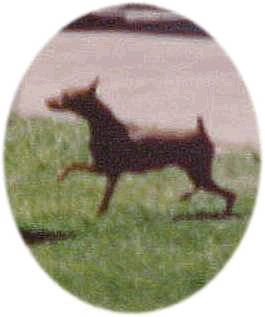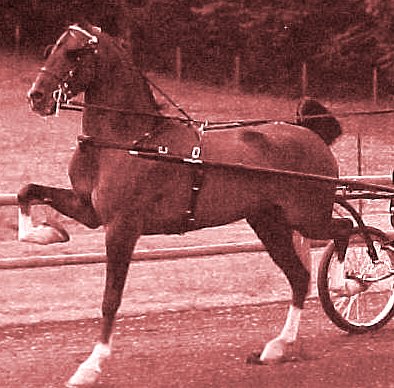

Gait
The forelegs and hind legs move parallel, with feet turning neither in nor out. The hackney-like action is a high-stepping, reaching, free and easy gait in which the front leg moves straightforward and in front of the body and the foot bends at the wrist. The dog drives smoothly and strongly from the rear. The head and tail are carried high.


Comments
Oh, the confusion this part of the standard causes. A large part is the language. The standard calls for a hackney-like action. This comes from horse terminology. A Min Pin could have correct Hackney-like action but be faulty in its gait. On the other hand a Min Pin could have good movement but not have the Hackney-like action.. A Hackney horseís "action" is an artificial action accomplished with the aid of weighted shoes and other devices that accomplish a rack or extreme action. A gait is the natural type of movement such as walk, trot and canter. The true hackney action is one of elevation, conspicuously high knee and hock flexion in stepping. The horse follows through at the highest point of the leg elevation and throws the leg forward. There is a period of suspension before that leg returns to the ground and while the rear is thrusting the animal forward. If the hackney pony had the rear angulation that the Min Pin standard calls for it would have itís poor rear tangled up in the cart! The standard was revised from hackney action to the hackney-like action to help new judges and breeders understand the gait better. We need to separate gait and action. A Min Pins gait should be as the standard describes it above.
Nice smooth correct movement with a break at the wrist. A straight legged, high stepping goose step is a fault. Coming at you with the front legs flailing and hitting their chins is a fault. The rear movement is just as important as the front movement.